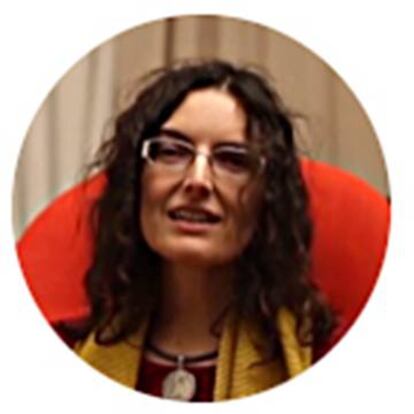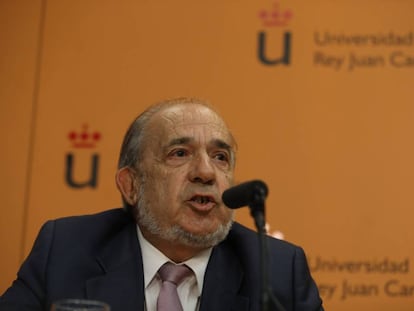Memorize or innovate? Cambridge¡¯s Spanish faculty members compare methods
Educators at the prestigious British university criticize learning model used in Spain¡¯s public institutions


At Cambridge University, exams are anonymous. Students use a number, not their name, and the tests are corrected by a committee of experts, not by the professor who teaches the course. That is one of the big differences between the second-oldest higher education center in Britain and Spain¡¯s public universities.
Cambridge ranks fourth in the world according to The Times¡¯ World University Ranking 2016-2017 and is the third most innovative ecosystem after Stanford and MIT. Fully 99% of its undergrads successfully complete their degrees, and of these, 91% find a job within six months of graduation.
EL PA?S spoke with six Spaniards who currently teach at Cambridge University to hear their own thoughts on the differences between Spain and Britain¡¯s university systems.
Rodrigo Cacho, Reader in Spanish Golden Age and Colonial Studies

After more than 12 years¡¯ experience teaching at Cambridge, Cacho believes that one of the biggest problems at Spanish universities is repetition and lack of creativity. ¡°If you are a young researcher, you are expected to cite traditional sources and not so much to contribute something new,¡± he notes. ¡°This is a problem at Spanish universities because of the way you learn.¡±
¡°In Spain, dissertations are very long, around 500 pages, of which the first 100 are spent summarizing everything that has already been published on the subject to date. The student simply demonstrates knowledge of this existing literature,¡± he adds.
But at Cambridge a dissertation is 150 to 200 pages in total and ¡°you cut to the chase from the beginning. You don¡¯t have the luxury of summing up what¡¯s already known. It¡¯s a different working style:? it¡¯s not about proving what you know, but about creating something new.¡±
?ngeles Carreres, Senior Language Teaching Officer in Spanish

She arrived in Cambridge 20 years ago, but still remembers that classes at Spanish universities were based on lectures. ¡°There was no opportunity for interacting with the professors, except for asking questions in class. It was quite an impersonal experience,¡± she notes.
Also, evaluations were based on exams that required students to memorize content and repeat it. ¡°It was not very different from school,¡± says Carreres. It was a stay at Nottingham University that first awakened her critical side. ¡°The seminars and small classes were very revealing. I realized that in Spain, students are not taught to think for themselves or to prepare for a professional future.¡±
The Cambridge model requires a lot more effort from instructors. ¡°It¡¯s easier to prepare a lecture where nobody is going to question you. I felt insecure at my first seminars in Cambridge, where students question ideas.¡±
Faculty selection is another big difference, says Carreres. ¡°They interview you and then you have to give a class to the hiring panel. There is no entrance examination and the university has complete freedom to hire its candidates.¡±
Carreres did not think she¡¯d be hired. ¡°It seemed impossible to me that they didn¡¯t have an internal candidate list,¡± she said, until she realized that there were alternatives to the ¡°culture of nepotism¡± where people feel entitled to a position because they¡¯ve been ¡°bringing coffee¡± to the department head for years.
Be?at Gurrutxaga-Lerma, Research Fellow in Micromechanics
The regular tutorials at Cambridge mean that students spend quality time with instructors to discuss specific subject matter. ¡°You quickly realize which students have problems, where their weaknesses lie, and what areas need extra work. You see what their working habits are, and since they see you every week, it forces them to keep up to date with the coursework. You can almost predict what grade they¡¯re going to get in the exams,¡± he says.
Unlike the system in Spain, the goal here is to teach students to think and learn for themselves, rather than testing them on content, says Gurrutxaga-Lerma. ¡°Teaching is much more personalized and organized around the student¡¯s needs.¡±
Emilio Artacho, Professor of Theoretical Physics

He has been teaching at Cambridge for the last 17 years and before that he taught for seven years at Madrid¡¯s Autonomous University. Artacho believes that the Spanish model is horizontal: students attend their nearest university, and the quality of learning does not differ greatly from one center to the next. But British and US models are vertical, with much greater differences between universities.
Artacho laments the fact that in the Spanish system, faculty members sometimes feel proud about their students¡¯ ¡°enormous flunking rates.¡± ¡°Last year I was an examiner for around 400 first-year physics students, and only three failed. This is the norm around here. Students are not held back, and there are no repeat exams,¡± he says.
David Fairen-Jim¨¦nez, Lecturer in Materials Chemistry

He has been at Cambridge since 2012, and sees student evaluations as one of the big differences between both education systems. ¡°I have to prepare the exam questions four months in advance,¡± he notes, explaining that his own department and an external committee review them to see whether they are suited to the course syllabus.
Fairen-Jim¨¦nez also points out that Spanish university faculty members have ¡°enormous¡± workloads compared with colleagues from other countries. ¡°They have to work a lot more, and in order to have a good research resume they need to work in their free time. More instructors would mean less of a workload.¡±

Albertina Albors-Llorens, Reader in European Union Law
She studied law in Spain and remembers that her professors showed her the importance of ¡°perseverance and constant effort in your academic life.¡± The tutoring sessions at Cambridge, she says, allow teachers and students to delve deeper into the legal subject matter addressed in class, and to consider its practical applications.
English version by Susana Urra.
Tu suscripci¨®n se est¨¢ usando en otro dispositivo
?Quieres a?adir otro usuario a tu suscripci¨®n?
Si contin¨²as leyendo en este dispositivo, no se podr¨¢ leer en el otro.
FlechaTu suscripci¨®n se est¨¢ usando en otro dispositivo y solo puedes acceder a EL PA?S desde un dispositivo a la vez.
Si quieres compartir tu cuenta, cambia tu suscripci¨®n a la modalidad Premium, as¨ª podr¨¢s a?adir otro usuario. Cada uno acceder¨¢ con su propia cuenta de email, lo que os permitir¨¢ personalizar vuestra experiencia en EL PA?S.
?Tienes una suscripci¨®n de empresa? Accede aqu¨ª para contratar m¨¢s cuentas.
En el caso de no saber qui¨¦n est¨¢ usando tu cuenta, te recomendamos cambiar tu contrase?a aqu¨ª.
Si decides continuar compartiendo tu cuenta, este mensaje se mostrar¨¢ en tu dispositivo y en el de la otra persona que est¨¢ usando tu cuenta de forma indefinida, afectando a tu experiencia de lectura. Puedes consultar aqu¨ª los t¨¦rminos y condiciones de la suscripci¨®n digital.










































